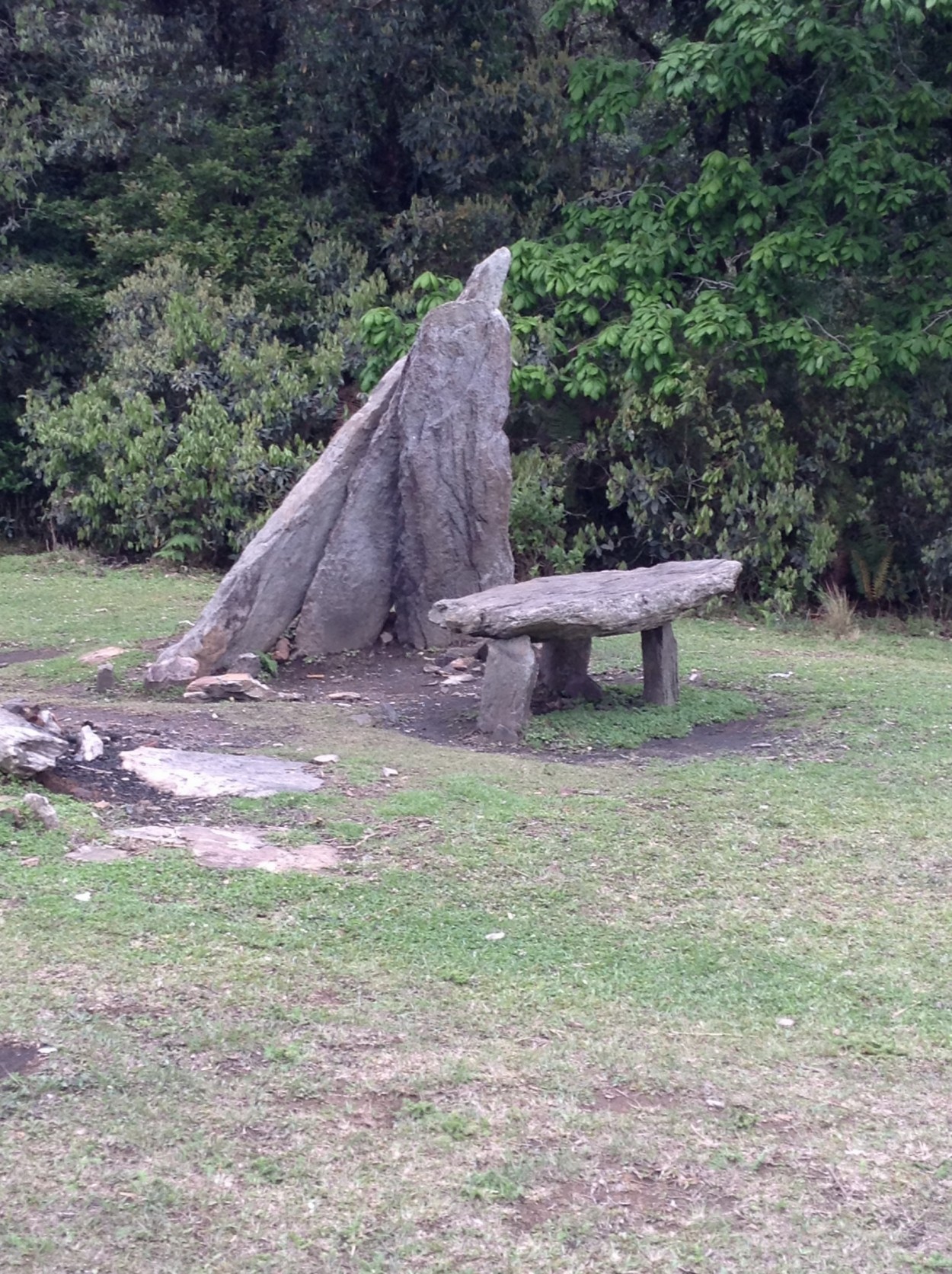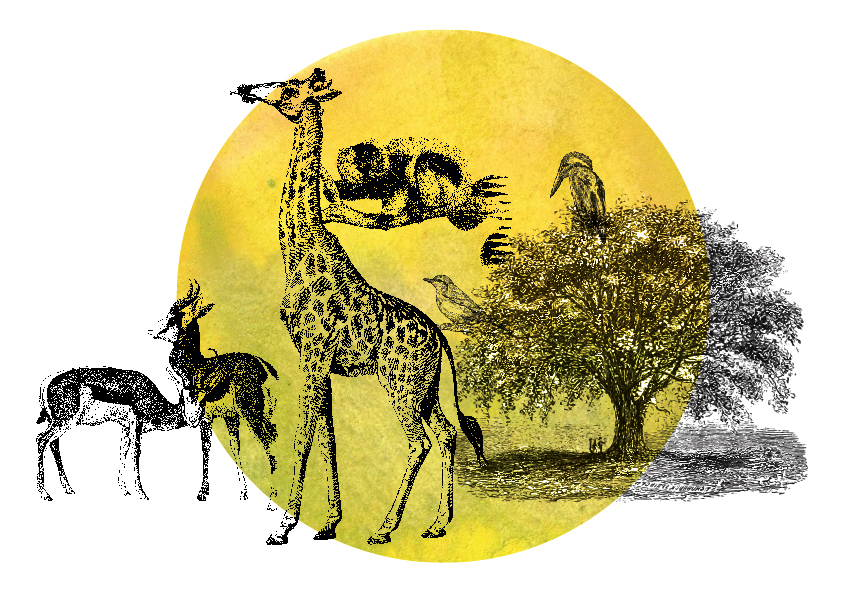Many Seeds, One Garden: Learning from the Sacred Groves of India
Article By Manjula Nanavati (compiled by)

UNESCO has designated April 22nd as International Mother Earth Day to raise public awareness of the challenges to the well-being of our planet, and to recognize our collective responsibility to promote harmony with nature.
At an event, to delve deeper into this, and as part of the international celebrations of Mother Earth Day in close to 500 New Acropolis centres all over the world, New Acropolis, Mumbai in collaboration with the Bombay Natural History Society, invited noted Author, Historian and Environmentalist Dr Nandita Krishna to join Yaron Barzilay, National Director New Acropolis India North, to shed light on the concept of Sacred Groves of India.
Dr Nandita Krishna is the founder of CP Art Center, CPR Institute of Indological Research and the CPR Environment Education Center in Chennai, as well as the Shakuntala Jagannath Museum of Kanchipuram. She is the author of multiple books spanning art, culture, religion, and environment. She has led the restoration of 53 sacred groves in India and is the recipient of several awards including the Devi Award, the Nari Shakti Puraskar, the Stree Ratna, the Outstanding Women of Asia Award, the recipient of a the D.Litt from Vidyasagar University, and most recently awarded the National Fellowship by the Indian Council of Historical Research.
Dr Krishna spoke knowledgeably and shared a plethora of important information about these multi-layered habitats and why we must protect them.
Yaron Barzilay has researched and written a scholastic article on the Sacred Groves of India, to be shared the across over 50 countries of International Organization New Acropolis. Never content to be a man of theory, Yaron is putting his work into practice, by leading the effort to create a sacred grove in Raigad, Maharashtra, at Manav Bustan, (which means a garden for human flourishing, and is the rural branch of New Acropolis, Mumbai). His valuable inputs and comments brought out the philosophical wisdom of these mystical spaces, and what we can learn from them to apply to our own lives today.
Below are excerpts of their conversation at the event held at the New Acropolis main centre, Colaba:
Yaron Barzilay began by saying to Dr Krishna, “Though you don’t know it, I am a fan of yours. I was researching a scholarly article on sacred groves & looking for information, and I found lots of ecological and scientific articles and websites, but I found your writing to be so much more than just informative: they opened something with regards to meaning of it, and it showed the love you have for this subject, and that I think is the most important point. Personally I think there is something about the concept of Sacred Groves, that can teach us something.
There are estimated to be more than 1,00,000 sacred groves all over India and if I’m not wrong, only 10% of them have been officially documented. Perhaps these sacred groves that remain are just patches of something much greater that existed in the past. Mythology, Philosophy, Teachings from the Ramayana & Mahabharata are replete with the link with nature. And I thought maybe there is some key, something to investigate. And may be more than finding answers, to find a path of philosophical search. Philosophy is a search, and may be these sacred groves can tell us about the relationship between man & nature, not just a simple link, but that man is an integral part of nature, and when we say nature, we mean the whole universe.
Beyond the biological, anthropological, ecological treasure, and the great social value they have, the folklore, tradition, rituals yes, but there is obviously a spiritual contribution, and for us, we must try to track the reason, the philosophy and the wisdom behind it. And because they still exist, we can do that, we have a unique opportunity to track the connection with land, the connection with nature and the connection with life.”
Said Dr. Krishna, “India was once a thickly forested country, & there was a close symbiotic relationship between Man & Nature. Animals and trees were the first objects of worship in ancient civilizations. Indian sacred ecology begins from the Indus Valley , as depicted in seals from Mohenjo Daro circa 2500 BC. In the Bhagavad Gita, Krishna says, I am the earth, I am water, I am the air. In the Vedas, nature was a part of an indivisible life force, which united the worlds of human, animal and plant. Sacred forests & groves were an important part of the culture of Pre-Christian Europe, Shintoism in Japan, Taoism in China, and of course Hinduism, Jainism & Buddhism in India.
The Ramayana & Mahabharata are a botanists delight, enumerating a multitude of forests, rivers, plants, tanks, trees & flowers that were held sacred. Forests were a place for retreat, where sages went to gain inspiration by immersing themselves in the natural beauty and mystical surroundings. The Aranyakas which are an ancient part of the Vedas were compiled by sages living in these forests. Many traditional medicinal plants and trees grew there. They were home to local fauna. They were a unique form of biodiversity where religion & culture combined to conserve ecology in a tradition that goes back to food gathering societies, and are today the single most important heritage of the culture of Ancient India.
Today, these sacred groves survive as patches of forest that range in size between two hectares to several hundred, containing natural, native, endemic vegetation, protected by local communitiess with a spiritual connection shared by the land and the people. Normally dedicated to a Mother Goddess they are protected through strong taboos and afforded a great degree of sanctity. Many tribes forbid any human interference in the sacred groves. Tree felling and hunting of animals are strictly prohibited. Leaves, fruits or roots may only be removed for medicinal purposes. In some places, dead wood or dry leaves may be picked up to cook the prasad (offering to the gods) during a festival. But on a live tree and its branches, you cannot use a knife because using a knife on a tree is like using a knife on a human being. Even children are taught to revere these sites and not wear slippers while entering the grove. Transgression of any taboos invites strict punishment from the local panchayat (village council).
The sacred groves are spiritual, sacred, magical spaces that afford many benefits: Shelter of fauna, conservation of medicinal plants, control of air pollution and temperature, preservation of fertility of the soil, retention of water, scenic beauty and inspiration, and a spiritual retreat.
Yet today these beautiful habitats are under threat: from disappearing traditional belief systems, urbanization, development & encroachments, changing forms of worship, religious conversions, the pressure of feeding increasing livestock on dwindling pastures, and fuel wood collection.”
Yaron added to this idea: “Maybe the reason it disappeared quite fast, is the idea of segregation or separation of the concept of Pantheism (associated with divinity in everything) from Polytheism (a pantheon of many Gods), and monotheism (the tradition of one God). In Acropolitan philosophy, we say that this division between the 3 is wrong, all 3 should exist together & not be separated: one divinity, one sacred life, and the idea that nothing is devoid of theos, the sacred. We need to bring our consciousness to this.
One of Dr. Krishna’s books speaks about some groves that are dedicated to Parbrahm, the One God, others revere many Gods, specific Gods, and forces of nature; sometimes specific sacred trees or sacred animals. So sacred groves teach us that the segregation between these 3 concepts exists, but they are not separate, and to separate them is part of the problem.”
Dr Krishna: “Today of so many groves, all over India, we have documented 11,000 restored 53 to health, and have now created a new one. That was the toughest proposition. We started with 2 acres; I spoke to all the village elders asking them what were the plants that grew here, what were the taboos, and rules for maintenance. My team, that included botanists, researched even more, and slowly we expanded to 5 acres and ended up creating a forest of 25 acres. Soon, nature took over and today it is abundant with wild life, even leopards !“
Yaron commented: “There is an ecological point of view that that says that it is better for nature to remove the human being from the ecological chain. An interesting thought, but I challenge that. To remove any element of nature, like the bee, may have consequences that we cannot completely fathom, so to consider human beings as an unimportant element of nature seems counter-intuitive. If we are powerful and have more abilities and definitely more consciousness, doesn’t it mean we have more responsibilities towards nature and its creatures? So perhaps there is a universal message here. The sacred groves can offer us a secret or a hint that will help all humanity: that we are all inextricably linked.”
Dr Krishna agreed: “I would like to end by saying, human beings have no dominion over Earth. We are one unified whole. The Atharva Veda says it is up to us, the progeny of Mother Earth to live in peace & harmony with all life. The divine is all, and all life is to be treated with reverence and respect. Vasudaiva Kutumbakam is not just a political slogan; it is a family of Mother Earth, one that must promote Sarva Bhuta Hite, the welfare of all beings.
If the forests, trees, fresh water and clean air were to disappear, so will all life on earth. And in order to be sustainable over the long term, environmental policies and programs should take cognizance of traditional values and ideals, otherwise they will fail to enlist the local & popular support needed to succeed.”
Yaron: “But beyond utilitarian ecology, may be its important to also speak about spiritual ecology: to be one with nature. We speak of Mother Nature, is it just a metaphor? And if it is not, can we treat this beautiful planet as a being? It is philosophical food for thought.
Know thyself is a famous phrase, but the entire quote is less well known: Know yourself and you will know the Gods and the universe. This implies that by knowing the self, one knows the whole universe, nature, because we are part of it.
Gandhi has said, ‘…in nature there is fundamental unity running through all the diversity’. In speaking about sacred groves we often emphasize what these groves can teach us. But maybe we should emphasize the first word – sacred… the unity that Gandhi speaks of. We need to come closer to the unity beyond the diversity of the groves. The sacredness which is not necessarily religious, the unity of life. And we are part of it. And if we don’t see that we are part of that unity then maybe we don’t know ourselves.”
DR Krishna concluded: “Every person must act for the general welfare of the earth, of humanity, of all creation and all aspects of life. This is the unity which is an essential part of our lives. The Mahabharata says Dharma is meant for the well-being of all living creatures, so that by which the welfare of all living creatures is sustained, that is Dharma. I would like to end with the Shanti Mantra, (the peace prayer from the Upanishads) that embodies this idea:
May peace radiate in the whole sky and vast ethereal space; may peace reign all over this earth, in water in all herbs, trees and creatures; may peace flow over the whole universe; may peace be in the Supreme Being; may peace exist in all creation, and peace alone; may peace flow to us and all beings. Om Shanti Shanti Shanti.
The entity posting this article assumes the responsibility that images used in this article have the requisite permissionsRead the original article on https://theacropolitan.in/2024/07/02/many-seeds-one-garden-learning-from-the-sacred-groves-of-india/
Permissions required for the publishing of this article have been obtained




What do you think?